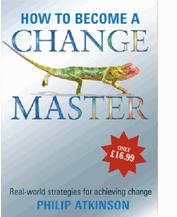
I mean, what’s it like to do business with your organisation? Is it a joy or is it a bureaucratic nightmare? Are you customer-focused or more focused on your preferences for how you deliver to customers with your services? Do your customers have a great deal of faith and trust in you as service providers?
We believe it is critical to see how well we deliver to your customer, and one sure way is by undertaking ‘due diligence’ about how much Trust our customers and our employees have in what we do and how we do it.
Cultural Review: focusing on ‘Trust’ as a central feature
Trust is vital in organisations. Above all, if your employees don’t have a high level of trust in the organisation and what you stand for, how do you think external stakeholders such as your customers, end-users, regulators view you?
Once gone Trust is hard to build
Let’s face it; organisations can devote a huge amount of time and resource to build Trust with all stakeholders and customers. It takes years to create but minutes to lose. Internally, Trust is the emotional glue that brings teams and people together to work and interact in a planned and meaningful way of delivering to consumers.
Discomfort, stress and conflict
Organisations that do not have a high degree of Trust can be dangerous places to work. If people cannot experience Trust in their day to day dealing, they will be less than forthright in expressing their concerns about what is not working and their ideas for improving things.
Illegitimate Authority
Control and support in the organisation can be eroded if a less than legitimate culture and bad behaviours start to arise. Many have experienced the ‘runaway’ personal ambitions and the political agenda that typified many financial service providers in the last few years. They were not the only culprits, as lack of Trust in the Charity Sector, the Police, FIFA, the Catholic Church and IAAA and anti-doping agencies was evident.
Useless Distractions
The politics and the resulting ‘turf wars’ detract from the core business. They become toxic places to work. Productivity is low and the best people migrate to better employers. Customer service tends to be appalling and relationships with stakeholders and suppliers are typified by suspicion, and “getting one over” on others occupies too much time.
Where does your organisation fit in the Trust stakes?
You may like to know that we have developed a series of diagnostics to provide accurate and precise feedback on how you are doing along the following lines:
- Your Customers, end-users, consumers – (if you are in the non-commercial sector read this as end-users, the public, citizens, user groups, pupils, students and patients, residents and passengers)
- Relationships with stakeholders, investors, regulators and suppliers
- Trust across the organisation – functional reliability and cross-functional working
- Trust in functional and smaller teams
- Trust between staff and managers
High Trust & Positive Working
Organisations that portray a high degree of Trust between people, teams and departments are more coherent and cohesive in their actions. Trust is vital for working productively and in unison.
An organisation with a high degree of Trust is typified by:
- Creating ‘Honesty’ as a core value
- Being customer-focused with a clear strategic direction
- Having a shared vision of positive outcomes
- Engaging in meaningful and satisfying work
- Positively projecting shared values in working together
- Developing a positive organisational culture supporting growth and learning
Low Trust, Cultural Conflict, Anxiety and Stress
An organisation with a low Trust index is typified by:
- ‘Bully boy’ leadership typically displayed by the personal ambitions of a small core of Leaders
- Focus on short term goals and resolving ‘my turf’ and my career and my ambitions to get on ‘no matter what.’
- Working relationships having only win-lose outcomes with customers taking second place
- A climate of suspicion – major communication is through the grapevine and rumour mill
- Fear driven culture - with command and control attitudes
- A plethora of personal agendas over-riding business aims
Employees have Choice and Exercise it
It is no surprise that most people would always opt for working in the first type of organisation (illustrated above), but may find, for whatever reason, that their current team or organisation is adopting the characteristics of the second organisation (outlined above).
Desirability to Assess trust in Organisations
Trust is an important component of the organisational culture. A culture where ‘Trust’ is dominant will be committed to engaging with staff at all levels. Trust is vital in working relationships and is achieved when functional harmony and exceptional teamwork is the norm.
Organisations that demonstrate high levels of Trust also project that Trust to their stakeholders, end-users, customers and clients. Organisations with a high Trust index deliver much better customer service than their low Trust counterparts.
If you would like further information on how to measure Trust in your culture, email Philip here [email protected]
If you’d like to read through our published article see below or to access our separate report please email Philip.
| building-a-culture-of-trust.pdf |
 RSS Feed
RSS Feed

